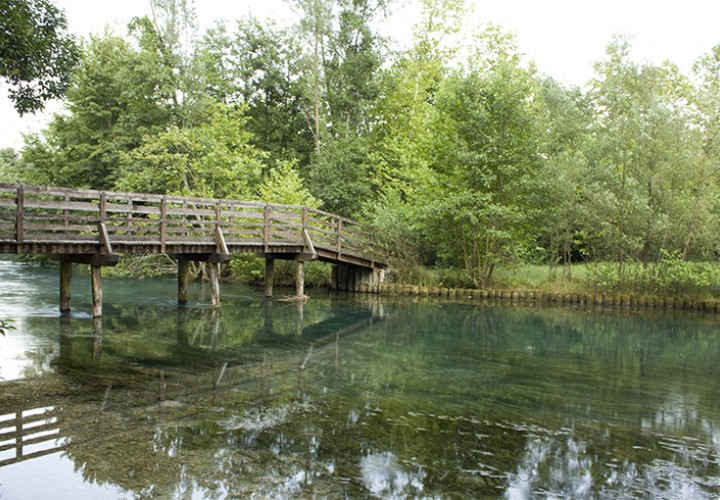NATURE / Waters
Palù di Livenza and Pile-dwelling Site

Of considerable natural interest is the prehistoric site of Palù di Livenza, called Palù della Santissima, which takes its name from the marshy area downstream of the Livenza springs, at the foothills southeast of Mount Piancavallo. The swampy state of the area between the springs of the river and downstream water meadows is home to many hygrophilous plant species and avifauna typical of marshy places.
The archaeological value of the area has been known since the ‘60s when, following excavation works, ancient wooden poles and numerous findings of pottery and stone came to the surface, proving the existence of ancient pile-dwelling settlements . Studies have allowed us to reconstruct the history of the Palù basin, which has witnessed a transformation over thousands of years from a lake to a semi-dry peat bog, now crossed by the river branches of the Livenza river. Coring and stratigraphic-sedimentologic studies conducted suggest the use of the site since the ancient Palaeolithic age (about 4900 BC), making it the oldest pile-dwelling site in northern Italy. In particular, the dendrochronologic and paleobotanic studies performed have demonstrated the existence of at least three types of pile-dwelling building structures, related to different stages of settlement, chronologically dating back to the late Neolithic period.
The archaeological value of the area has been known since the ‘60s when, following excavation works, ancient wooden poles and numerous findings of pottery and stone came to the surface, proving the existence of ancient pile-dwelling settlements . Studies have allowed us to reconstruct the history of the Palù basin, which has witnessed a transformation over thousands of years from a lake to a semi-dry peat bog, now crossed by the river branches of the Livenza river. Coring and stratigraphic-sedimentologic studies conducted suggest the use of the site since the ancient Palaeolithic age (about 4900 BC), making it the oldest pile-dwelling site in northern Italy. In particular, the dendrochronologic and paleobotanic studies performed have demonstrated the existence of at least three types of pile-dwelling building structures, related to different stages of settlement, chronologically dating back to the late Neolithic period.
The materials found and retrieved in different excavation and research campaigns, consisting of the lithic artefacts, objects made of wood and ceramic pieces are mostly sporadic and atypical, such as a wooden paddle of a lanceolate shape that can be interpreted as having been used as an oar or paddle. Interesting palaeobotanical studies have reconstructed the habitat at the time of the settlement, resulting in the so-called mixed oak wood populated by deer and wild pigs.
